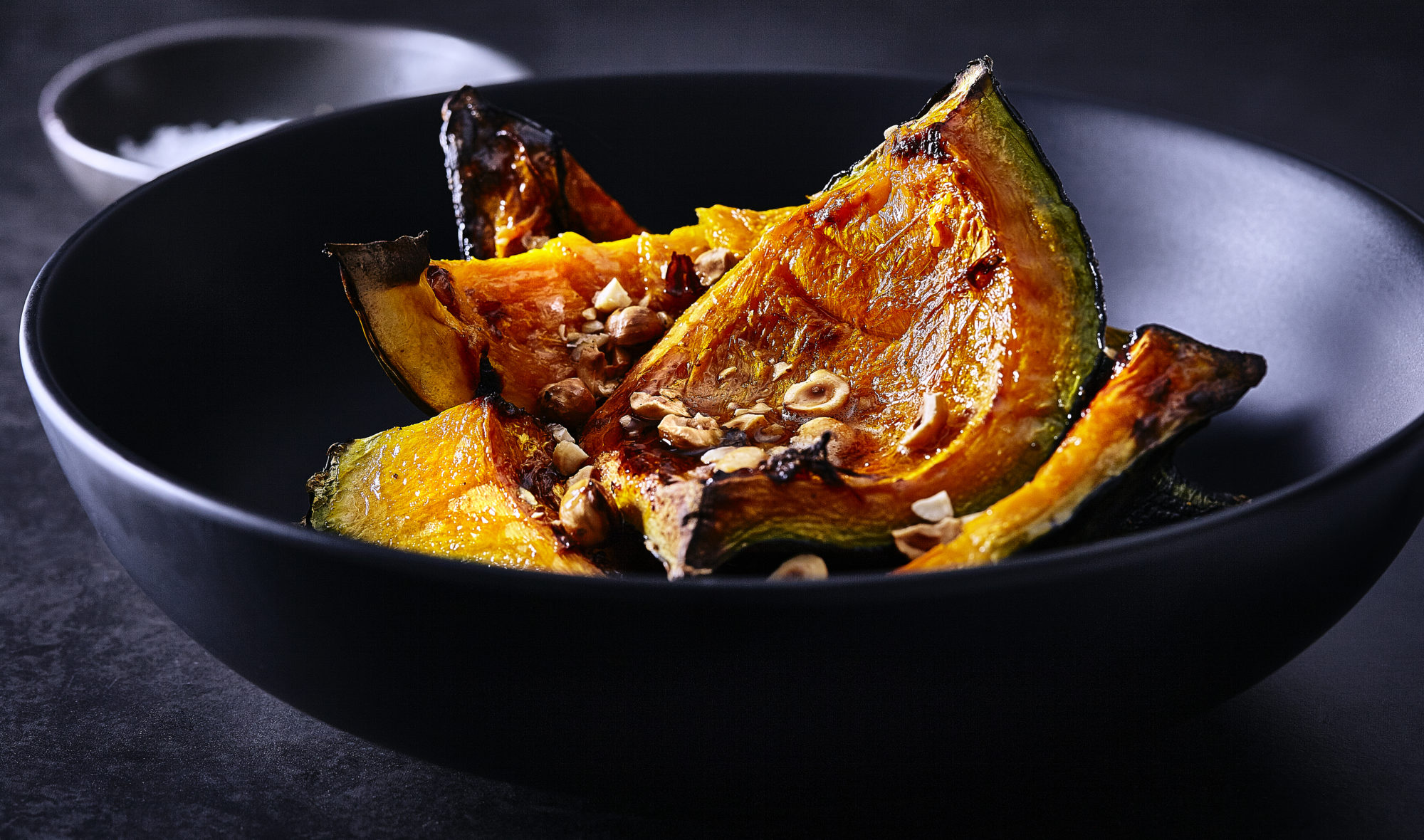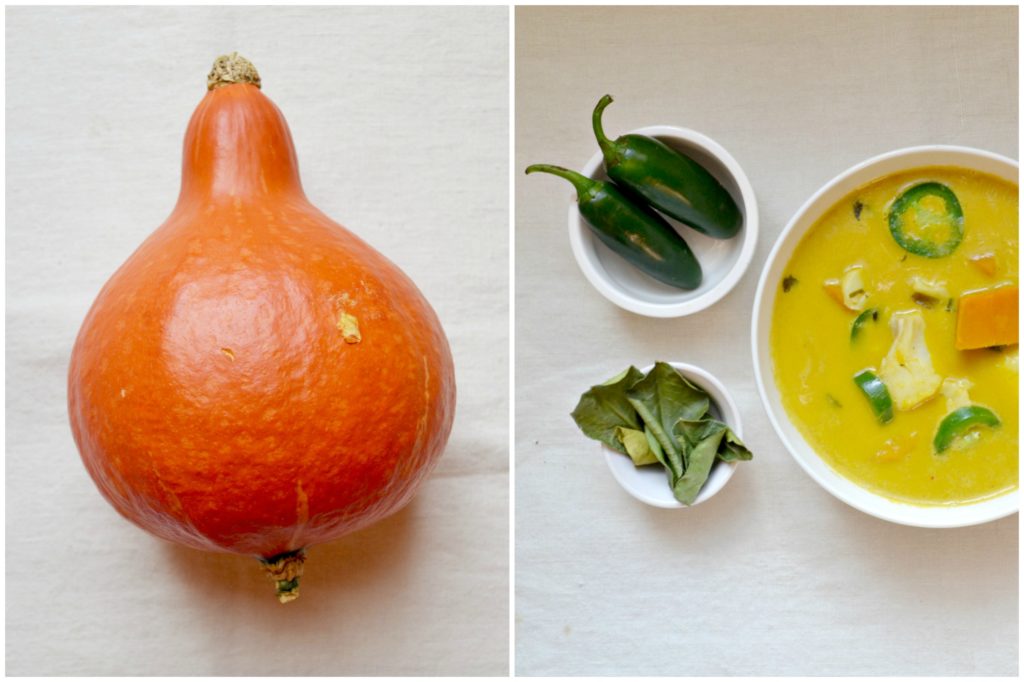
🎁 Holiday Special: SAVE 52% on the Nutrition Coach Starter Package. Limited number remaining.

🎁 Holiday Special: SAVE 52% on the Nutrition Coach Starter Package. Limited # left.

Hubbard squash is a member of the Cucurbita maxima family of winter squash, which also includes banana squash, kabocha squash, and turban squash. You will likely find Hubbard squash in one of two colors: greyish blue or bright orange. Although markedly different on the outside, this is where dissimilarities end between these two varieties. On the inside, they are otherwise identical. And the inside is the good part. The golden, beta-carotene-rich flesh of the Hubbard squash is smooth, slightly sweet, and satisfyingly starchy. Like many other squash varieties, Hubbard squash has a versatile flavor that goes well in both sweet and savory preparations but is perhaps most delicious when prepared simply: roasted, topped with butter, salt, and a crack of fresh pepper.
Hubbard squash is a member of the Cucurbita maxima family of winter squash, which also includes banana squash, kabocha squash, and turban squash. Like its cousins, Hubbard squash is generously-fleshed and hardy. These qualities made winter squash excellent staples for our ancestors, who required foods that would store for long winter months between harvests without perishing, and would also supply rich nutrition.
Winter squash is thought to have originated in the Americas and was originally cultivated for food by Native tribes. The Hubbard squash, in particular, is said to be named after an American woman named Bela Hubbard, who allegedly introduced the seeds of this squash to a seed trader who named the plant after her.
Like many other squash, Hubbard squash has a versatile flavor that can be adapted to sweet or savory dishes.
Hubbard squash comes in two major varieties: blue or golden.
The blue Hubbard has a moody greyish blue skin while the golden Hubbard is bright orange. The color of their skin is where the dissimilarities end and are otherwise identical in terms of interior color, texture, and taste.
Both varieties are likewise rotund and heavy, weighing between eight and 20 pounds, on average, and have a shape that is reminiscent of a teardrop, with the stem end appearing as if it were stretched.
The flesh of the Hubbard squash is, when cooked, starchy and smooth. It has a sweet, carrot-like flavor and is golden orange in color.
One cup of cubed Hubbard squash (about 116g) has 46 calories, 2g protein, 1g of fat, 10g of carbohydrates, 2.5g fiber, and 2g sugar. Hubbard squash is an excellent source of vitamin A, in the form of beta-carotene, and a good source of potassium.
Hubbard squash is usually sold in season, which falls between early fall and early winter. During this time, you can usually find them at larger grocery stores, fruit and vegetable stores, and farmers’ markets.
When selecting Hubbard squash, choose specimens that are heavy for their size, with firm skin free of soft spots or cracks. Hubbard squash naturally has slightly nubbly, pock-marked skin, so don’t look for a Hubbard with perfectly smooth skin – you won’t find it. Many winter squash also exhibit greyish, scaly blemishes that are also completely benign and have no indication of quality.
Uncooked and whole, Hubbard squash will keep at room temperature for about a month.
Once cooked, store the leftovers in an airtight container and refrigerate them; they will stay fresh for about a week. Cooked leftovers can also be frozen for up to six months.
Hubbard squash, with its hard exterior and large size, can be awkward to slice up prior to cooking. Unless you have an excellent chef’s knife and some brawn, the easiest way to prepare a large winter squash is to roast the whole thing in the oven. Once cooked, it will turn soft and yielding so that even a weakling with a butter knife could carve it up and scoop out the seeds.
Here’s how to do it:
Preheat your oven to 400 degrees Fahrenheit.
While you are waiting for your oven to preheat, wash your squash, ideally with a scrub brush and some vegetable wash. This step is especially important if you plan to eat the skin.
Once the oven is preheated, place the squash in a shallow oven-safe pan filled with a centimeter or two of water, and place in the oven.
Bake for 45-60 minutes, or until a knife or fork can easily be inserted into the flesh.
Once it’s baked, allow the squash to cool, then slice it in half. Scoop out the strings and seeds at the core, and slice off the hard stem nubs at either end. Slice off any blemishes, and then cut the rest of the squash into desired chunks. If you are not eating the skin, simply scoop out the soft orange center.
Top with butter, salt, and a crack of fresh pepper, and serve hot.

This rich, aromatic Thai stew owes much of its personality to kaffir lime leaves, which have a bright, slightly citrus, perfumed flavor. Smooth orange Hubbard squash adds sweetness and jalapeño peppers finish each spoonful with a gentle bite.
Prep Time: 10 minutes Cook Time: 40 minutes Yield: 3-4 servings
Add all ingredients except jalapeño peppers and fish to a pot and cook over medium heat for about 30 minutes, or until the squash is fully cooked and soft.
Using a ladle, measure about a cup of the stew, being sure to include squash chunks and pour it into a blender or food processor, allow the soup to cool slightly, and then process until smooth.
Pour this puree back into the original stew, bring this mixture back to a gentle simmer, and then add the fish chunks. Simmer until fish is cooked, about 7 minutes.
Just prior to serving, stir in the jalapeño slices, and then ladle portions into bowls. Enjoy.
Precision Nutrition’s Encyclopedia of Food expands every single month as we highlight new foods and showcase beautiful food photography. If you’d like to stay up to date, simply click this link. From there, we’ll send you a FREE copy of our recipe book. We’ll also let you know when new and delicious foods are added to the site.
Hubbard squash is a member of the Cucurbita maxima family of winter squash, which also includes banana squash, kabocha squash, and turban squash. You will likely find Hubbard squash in one of two colors: greyish blue or bright orange. Although markedly different on the outside, this is where dissimilarities end between these two varieties. On the inside, they are otherwise identical. And the inside is the good part. The golden, beta-carotene-rich flesh of the Hubbard squash is smooth, slightly sweet, and satisfyingly starchy. Like many other squash varieties, Hubbard squash has a versatile flavor that goes well in both sweet and savory preparations but is perhaps most delicious when prepared simply: roasted, topped with butter, salt, and a crack of fresh pepper.